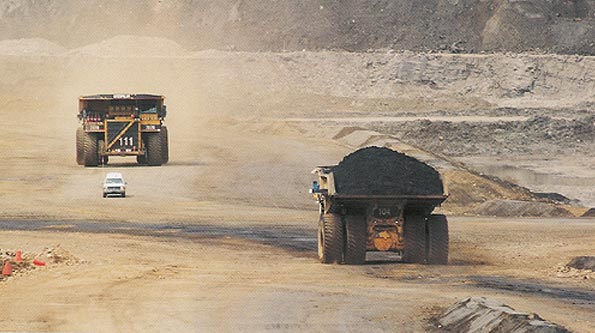Alberta crude may be too dirty, U.S. law says
 Alberta’s oil sands are taking a hit from new U.S. energy legislation passed last month that has an unusual wrinkle suggesting that Canadian crude might be too dirty for the U.S. government.
Alberta’s oil sands are taking a hit from new U.S. energy legislation passed last month that has an unusual wrinkle suggesting that Canadian crude might be too dirty for the U.S. government.The legislation won’t allow any U.S. federal agencies to buy vehicle fuel derived from non-conventional sources unless the life cycle of its greenhouse-gas emissions is the same or less than that of conventional petroleum. The sticky bitumen in Alberta’s tar sands is considered one of the world’s biggest potential sources of energy, but it’s also one of the dirtiest in terms of carbon dioxide emissions because it takes so much power to wring it out of the soil in which it’s trapped, putting it in the crosshairs of the new rules.
The directive could have a financial impact on the oil patch because the U.S. government is one of the world’s largest and most voracious consumers of energy, and it follows similar moves by many states, including California. The legislation, the Energy Independence and Security Act of 2007, was signed by President George W. Bush in December.
Elizabeth Martin-Perera, climate policy specialist at the New York-based Natural Resources Defense Council, says the provision covers new contracts for all government operations, including the military and the postal service, which together operate thousands of vehicles and are considered the No. 1 and No. 2 vehicle fuel users in the country.
The action is part of a growing move to take into account all greenhouse gases caused by the production and use of gasoline and other fuels. It puts unconventional petroleum, such as the synthetic crude from Canada’s oil sands at a disadvantage compared to easy-to-harvest oil from the wellhead.
“It’s another market signal to tar sands producers that, increasingly, consumers are looking to move away from high-carbon fuels,” says Dan Woynillowicz, a spokesman for the Pembina Institute, an environmental think tank.
The fuel requirement is in Section 526 of the new law, which runs for about 800 pages. Its main provisions deal with increasing the fuel efficiency of the U.S. vehicle fleet and increasing the use of biofuels. The part affecting non-conventional oil hasn’t received much notice.
Syncrude Canada Ltd., the largest oil sand producer, declined to comment, and referred questions to the Canadian Association of Petroleum Producers.
Association president Pierre Alvarez played down the procurement policy, saying the Canadian industry will defend itself by arguing that long-distance shipping of oil from the Middle East and elsewhere also carries a substantial environmental price tag. “In fact, Canadian fuels don’t appear all that bad,” he said. “It’s distance that’s a big-ticket item.”
An estimate by the Canadian Centre for Energy Information that used figures supplied by Syncrude, among others, said the emissions from oil sands fuel are about 7.6 per cent higher than the average of all North American crude imports. However, independent experts say the oil sands emit about 20 per cent more greenhouse gases than conventional sources.
Worries over climate change are driving the new rules. “Canada’s oil sands will face large-market risk unless the Canadian government, or the Alberta government, take this challenge seriously,” said Hal Harvey of the California-based William and Flora Hewlett Foundation, which helped develop a low-emission fuel standard in California.
You can return to the main Market News page, or press the Back button on your browser.

